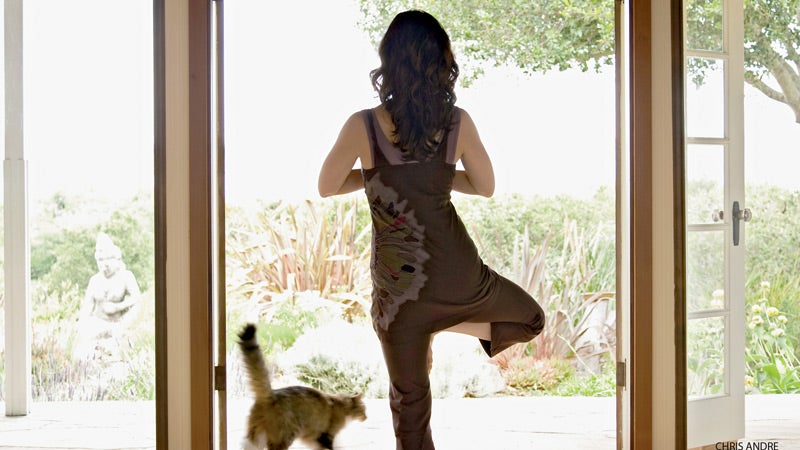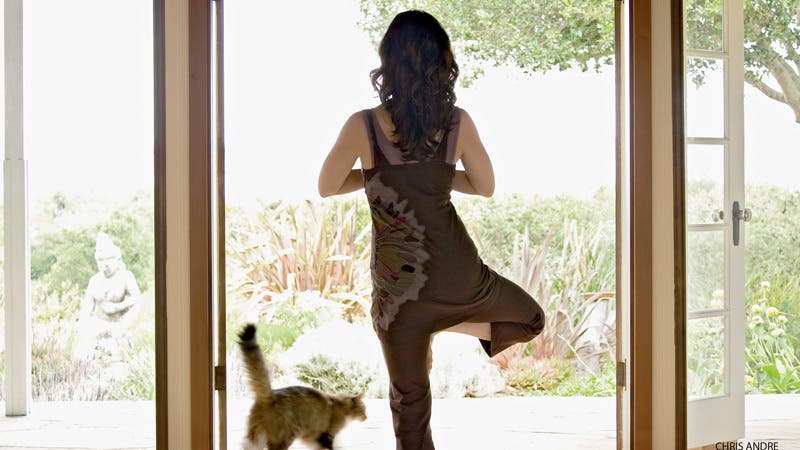Use Vastu To Create a More Soulful Home


Make your home a sanctuary for your body and your soul using Vastu, the ancient Indian science of design.
There is power attached to every space we enter, yet few of us make conscious note of it. Think of the last time you walked down a dimly lit public stairwell or sat cramped in the tight quarters of an airplane.
Remember how you felt about that experience? Most likely you couldn’t wait to escape the unappealing environment.
These are examples of negative spaces, and they illustrate the influence of space on our well-being. Negative space drags us down and sets our nerves on edge. Notice what happens to you the next time that you enter an unappealing space. Your body probably stiffens or you emotionally withdraw.
There are also neutral spaces, which are made so inoffensive that, in effect, their power is ignored. Many hotel environments may be visually impressive but are generally emotionally and spiritually empty. They are designed as transient, neutral spaces, attractive but unwelcoming. Since neutral space fails to take advantage of positive power, a neutral space does nothing to boost our well-being. Only a positive space works its magic on us.
Claiming personal space is the first step toward the creation of a successful home. Unless we take this action, a house or apartment will continue to resemble the worst aspects of a hotel suite. It feels like an impersonal stopover. Invariably, when a place remains unclaimed, it isn’t taken care of, either. The negativity attached to the perception of that space attaches to its inhabitants and damages the soul.
But how can we shake off passivity and begin the process of turning negative space into positive? We can draw on the insights of Vastu, the Vedic science of design.
See also5 Ways to DIY Your Own Yoga Sanctuary
What Is Vastu?
Vastu originated in the Indian subcontinent during the time of Vedic culture, which flourished more than 5,000 years ago. To this day, the people of India modestly call Vastu their science of architecture and design. But it is not merely about design aesthetics. It is about the nature of the universe and our relationship to it.
Specifically, Vastu is based on the Vedic idea that harmony within and without comes from observing the proper relationship with every space one inhabits. Simply put, Vastu’s ancient scholars believed that before internal peace can be achieved, a person must find external peace. To this end, they created a design science to help restore balance and well-being by creating a healthy and soothing home.
Along with yoga and Ayurveda, which share the same underlying philosophy, Vastu makes up the Vedic mind-body-soul equation. All three sciences aim to increase emotional, physical, and spiritual well-being. While yoga and Ayurveda focus on the body, Vastu focuses on the surrounding environments. It is the critical outer layer in this wellness triangle—because living in an environment that undermines well-being will end up undermining the benefits that come from practicing yoga and healthy eating.
Vastu and the Body
The Vedic scholars determined that Vastu would use the human body as a guiding force in the creation of any man-made structure. Observing the principle that the best architecture respects the body’s own magnificent architecture in proportion and in form, they saw that when people create spaces that honor the human body, they humanize those places—a concept that is too often undervalued in today’s stressful world.
The Vedic scholars went on to observe that, despite its overall symmetry, most of the body’s features, such as the eyes, ears, hands, feet, and breasts, are actually slightly asymmetrical. Examine your face in a mirror. Notice the shape of your eyebrows, the size and shape of your eyes, and the thickness of your lips. Are they perfectly symmetrical? Most likely not. Over time, the Vedic scholars incorporated their observations about the human body and the power of space into a sophisticated system of design.
Few people think of the body as an example of built space, but it is. Our body is also a dwelling site: It shelters the inner being or soul. In sum, it is a perfect example of Vastu—and a perfect example of living architecture.
The philosophy that flows through Vastu includes the principle that we must respect and preserve all creation. Everything that exists is divine. The Vedic law of nature is the fundamental rule in Vastu, and the Vedic scholars held that every dwelling should observe this law to ensure the well-being of its occupants. When the design of a space honors the needs and preferences of the individuals who live there—this includes the needs and preferences of the human body—the environment makes positive use of its inherent power. Harmony prevails.
Yoga and Home: Vastu Design Elements
The essential theories in Vastu revolve around three principles: The need to respect our interconnection with nature and welcome it into the home; the need to celebrate who we are and what we love in every space so that we create supportive environments; the need to align our biorhythms with the universal rhythms, in which the sun plays an important role.
Vastu’s first principle asks us to revere nature and liberally incorporate it into our interior décor. Most of us revere nature outside the home. Nature nurtures; the power of our relationship with nature gives us an emotional, spiritual, and physical lift.
The second Vastu principle is a reminder to respect our unique nature— our special essence—and the special essence of anyone who may share our home. We show this respect by mindfully creating a décor that unquestionably honors who we are and what we love.
The artwork and photographs on the walls of each room reflect this, as do the objects on the tables and the shelves; everything in our home reflects our identity and what we love. Entering any space in a personalized home triggers a visceral, positive response. We instinctively relax and feel at home.
The Vedic scholars noticed the ongoing rhythms in the rotation of the moon around the earth and in the rotation of the earth around the sun. They realized that these orbits lead to the expression of time and passage of the seasons. And they studied the quality of the sun’s rays—or just the presence of the light—and observed that it changes throughout the day.
See also 7 Ways to Create A Yoga Staycation
The Importance of Calming Light
The early-morning sun, they noted, is a source of calm and rejuvenation, while the afternoon sun can be intense and exhausting. This explains why yogis in India traditionally faced the north-east and the rising sun when they practiced their yoga and meditated. They wanted to absorb this light, with its restorative powers. The light’s physically calming quality also mirrored the state of the yogic mind and spirit when they did their postures and settled into meditation.
So how do Vedic theories about the healing nature of morning sunlight influence the first Vastu principle, which encourages the alignment of the body’s rhythms with the sun’s rhythms? Vedic scholars determined that a healthy home provides for ample exposure to revitalizing morning light and limited exposure to strong afternoon light, which makes us unnaturally tired.
In the practice of Vastu in the Northern Hemisphere, the principle leads to the placement of low, delicate, and lightweight furnishings in the north and east of a room so that the morning sun streams unrestricted through the windows. Heavier and taller furnishings are placed in the south and west to form a barrier against harmful midday and afternoon rays. (In the Southern Hemisphere, lightweight and delicate furnishings would be placed in the south and east, and bulky, tall furnishings in the north and west.)
Centuries ago, furniture placement was the most effective solution for controlling sun exposure inside the house. Today there are sophisticated solar treatments, such as window films that are more effective at regulating the presence of the sun in our home. Nonetheless, Vastu practitioners continue to observe this principle of alignment—even if there are no windows in the north or the east. Why is this? By establishing this level of mindfulness in the orientation of furnishings, they honor their relationship with the sun, even in its absence. Equally important, this placement introduces and reinforces the power of asymmetry, which appeals to the human body. Our body instinctively relaxes in asymmetrically organized rooms.
Finally, the Vastu layout, when repeated from room to room, creates cohesion. Every room becomes part of a unified whole. And this cohesion, a subtle expression of holism, is spiritually comforting and reassuring.
Excerpted with permission from Space Matters: Use the Wisdom of Vastu to Create a Healthy Home. 11 Top Designers Show You How, by Kathleen Cox. Kathleen Cox is the Founder of Vastu Living, a Vastu design consulting company.